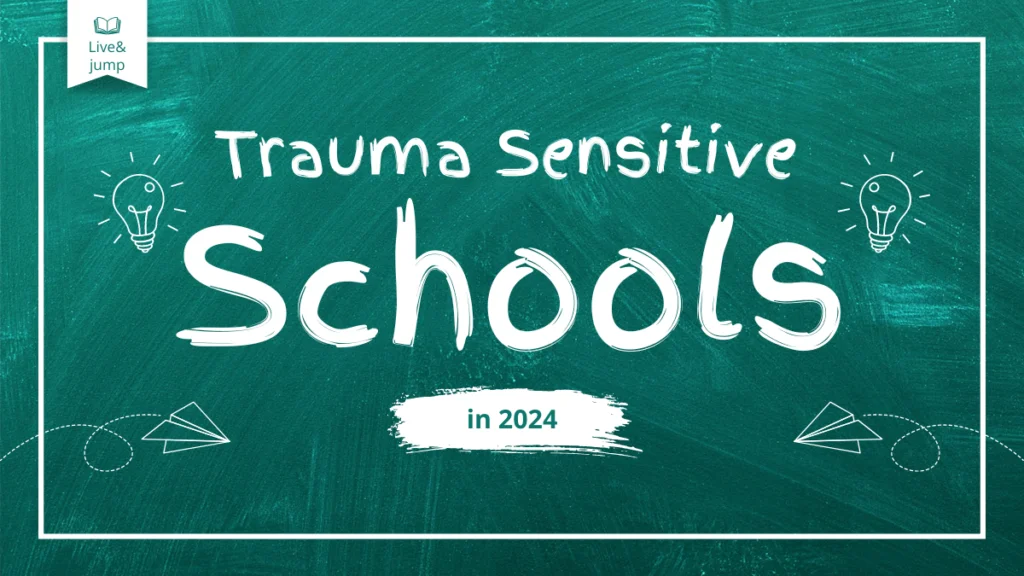Creating trauma sensitive schools in 2024
In the educational landscape, a seismic shift has occurred in the understanding and approach to addressing trauma among students. No longer viewed as isolated incidents with limited impact, trauma is now recognized as a pervasive force that can shape students’ academic performance, behavior, and overall well-being.
In response, educators, administrators, and policymakers are embracing the concept of trauma-sensitive schools, recognizing the critical role schools play in supporting students’ holistic development. By fostering environments that are safe, supportive, and responsive to students’ needs, trauma sensitive schools aim to create spaces where all students can thrive academically, socially, and emotionally.
In this comprehensive exploration, we will delve into the principles, strategies, and benefits of creating trauma sensitive schools, illuminating the transformative power of education in promoting healing and resilience.
Read: Emergency response with trauma

Understanding Trauma Sensitive Schools:
Creating trauma sensitive schools involves a paradigm shift in how educators perceive and respond to students who have experienced trauma. Unlike traditional approaches that may inadvertently retraumatize students or exacerbate their symptoms, trauma sensitive schools adopt a holistic and compassionate approach that prioritizes safety, stability, and healing. At the core of this approach lies a deep understanding of the neurobiological, psychological, and social impacts of trauma on students’ development and learning. By recognizing the unique needs and vulnerabilities of trauma-affected students, trauma sensitive schools strive to create environments where all students feel valued, supported, and empowered to reach their full potential.
Key Principles of Creating trauma sensitive schools:
1. Safety and Predictability: Creating trauma sensitive schools begins with establishing environments that are physically and emotionally safe for all students. This involves implementing clear routines, consistent expectations, and safe spaces where students can seek refuge during times of distress. By providing a sense of predictability and stability, schools lay the foundation for learning and growth.
2. Relationship Building: Strong, supportive relationships between students and adults are fundamental to creating trauma sensitive schools. Educators strive to cultivate trusting, empathetic connections with students, recognizing that positive relationships serve as a buffer against the effects of trauma and promote resilience. By fostering a sense of belonging and connection, schools create environments where students feel seen, heard, and valued.
3. Regulation and Coping Skills: Trauma sensitive schools prioritize teaching students skills to regulate their emotions and cope with stress in healthy ways. This may include incorporating mindfulness practices, relaxation techniques, and social-emotional learning programs into the curriculum. By equipping students with tools to manage their emotions and navigate challenges, schools empower them to succeed academically and thrive socially.
4. Individualized Support: Recognizing that every student’s experience of trauma is unique, trauma sensitive schools provide individualized support tailored to students’ needs. This may involve collaborating with mental health professionals, implementing personalized learning plans, and offering targeted interventions to address specific challenges. By meeting students where they are and providing the support they need to succeed, schools foster a culture of inclusivity and equity.
5. Collaboration and Community Engagement: Creating trauma sensitive schools requires collaboration and engagement with families, communities, and other stakeholders. Schools work to build partnerships with families, providing resources and support to help them navigate the challenges of trauma. By fostering a sense of community and shared responsibility, schools create networks of support that extend beyond the classroom and into the broader community.
Read: Poems about childhood trauma

Strategies for Creating trauma sensitive schools:
1. Professional Development: Educators and staff receive training on trauma-informed practices, equipping them with the knowledge and skills to recognize, respond to, and support students who have experienced trauma. Professional development opportunities may include workshops, seminars, and ongoing coaching and support. By investing in the professional growth of educators, schools ensure that they have the tools and resources they need to create trauma-sensitive environments.
2. Trauma-Informed Policies and Procedures: Trauma sensitive schools develop policies and procedures that prioritize safety, equity, and inclusivity. This may involve revising disciplinary practices, implementing trauma-informed approaches to classroom management, and establishing protocols for responding to crisis situations with sensitivity and compassion. By creating structures and systems that support students’ well-being, schools create environments where all students can thrive.
3. Culturally Responsive Practices: Trauma sensitive schools embrace culturally responsive teaching practices that honor students’ diverse backgrounds, experiences, and identities. By integrating students’ cultural heritage and perspectives into the curriculum, schools create a sense of belonging and affirmation that fosters resilience and well-being. By creating culturally responsive environments, schools ensure that all students feel valued, respected, and empowered to succeed.
4. Restorative Practices: Restorative practices offer an alternative approach to discipline that focuses on repairing harm, restoring relationships, and building community. In trauma-sensitive schools, restorative practices are used to address conflicts and behavioral issues in a way that promotes accountability, empathy, and growth. By emphasizing collaboration and relationship-building, schools create environments where students feel supported and empowered to take ownership of their actions and contribute positively to their communities.
Read: Causes of shoulder trauma

Benefits of Creating trauma sensitive schools:
1. Improved Academic Outcomes: By addressing the underlying causes of student behavior and supporting their social-emotional well-being, trauma sensitive schools create conditions conducive to learning and academic success. Students are better able to focus, engage, and participate in the educational process, leading to improved academic outcomes and achievement. By prioritizing students’ holistic development, schools lay the foundation for lifelong learning and success.
2. Enhanced School Climate: Trauma sensitive schools cultivate a positive school climate characterized by empathy, respect, and collaboration. Educators, students, and families feel valued and supported, fostering a sense of belonging and connection that contributes to a healthy and vibrant learning community. By creating environments where all members feel safe, respected, and empowered, schools foster a culture of inclusivity and equity that benefits everyone.
3. Increased Resilience and Well-Being: By providing students with the tools and support they need to navigate the challenges of trauma, trauma sensitive schools promote resilience and well-being. Students develop coping skills, self-regulation strategies, and a sense of agency that empower them to overcome adversity and thrive in school and beyond. By nurturing students’ social-emotional development, schools equip them with the skills and resilience they need to succeed in school, relationships, and life.
4. Stronger Relationships and Community Engagement: Trauma sensitive schools foster strong, supportive relationships between students, educators, families, and communities. By prioritizing collaboration and communication, schools create a network of support that extends beyond the classroom, reinforcing students’ social-emotional development and sense of connectedness. By engaging families and communities as partners in education, schools create environments where everyone has a stake in students’ success and well-being.
Read: Social media side effects on mental health

Conclusion:
In creating trauma sensitive schools, educators and stakeholders embark on a journey of empathy, understanding, and transformation. By embracing principles of safety, relationship building, and individualized support, trauma sensitive schools create environments where all students can thrive academically, socially, and emotionally. As we continue to prioritize the well-being of students and foster inclusive and equitable learning environments, trauma sensitive schools serve as beacons of hope, resilience, and possibility for generations to come. By investing in the creation of trauma sensitive schools, we invest in the future of our communities, our society, and our world.


Pingback: Embracing the Unexpected Gift of Trauma in 2024 - live and jump